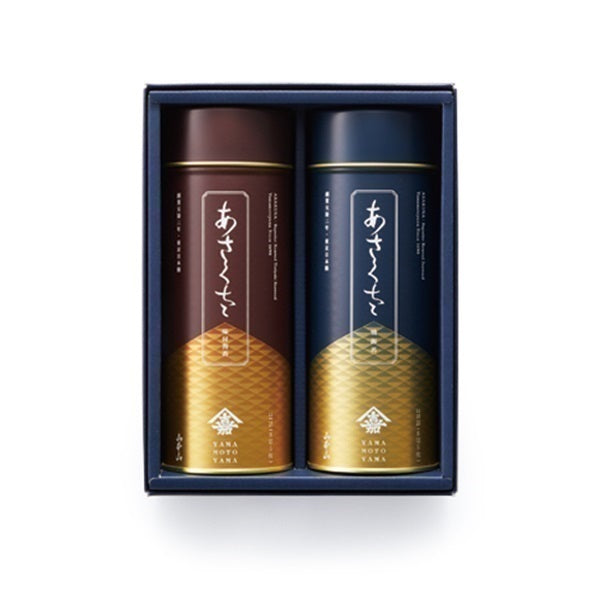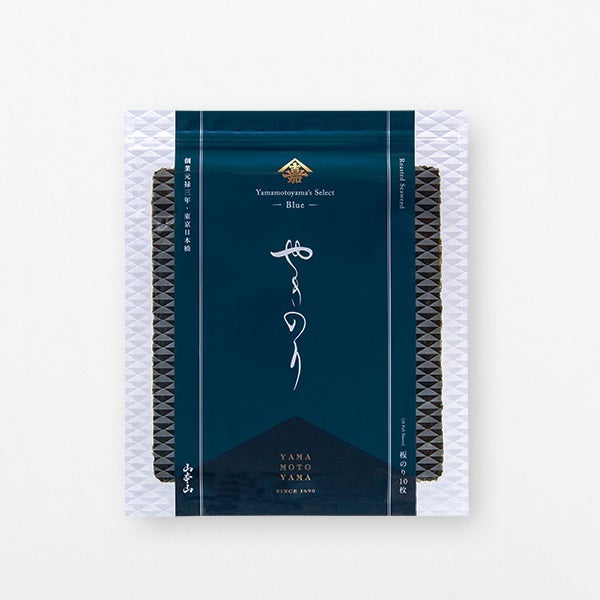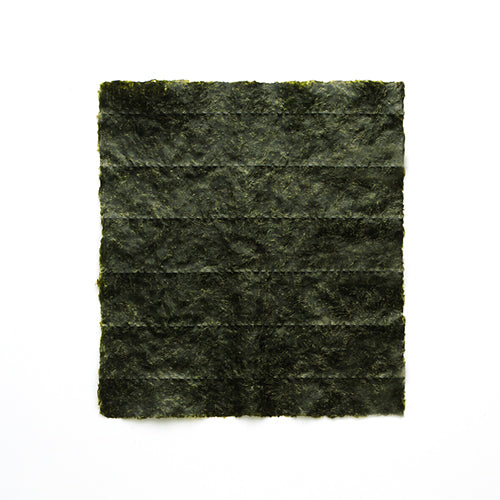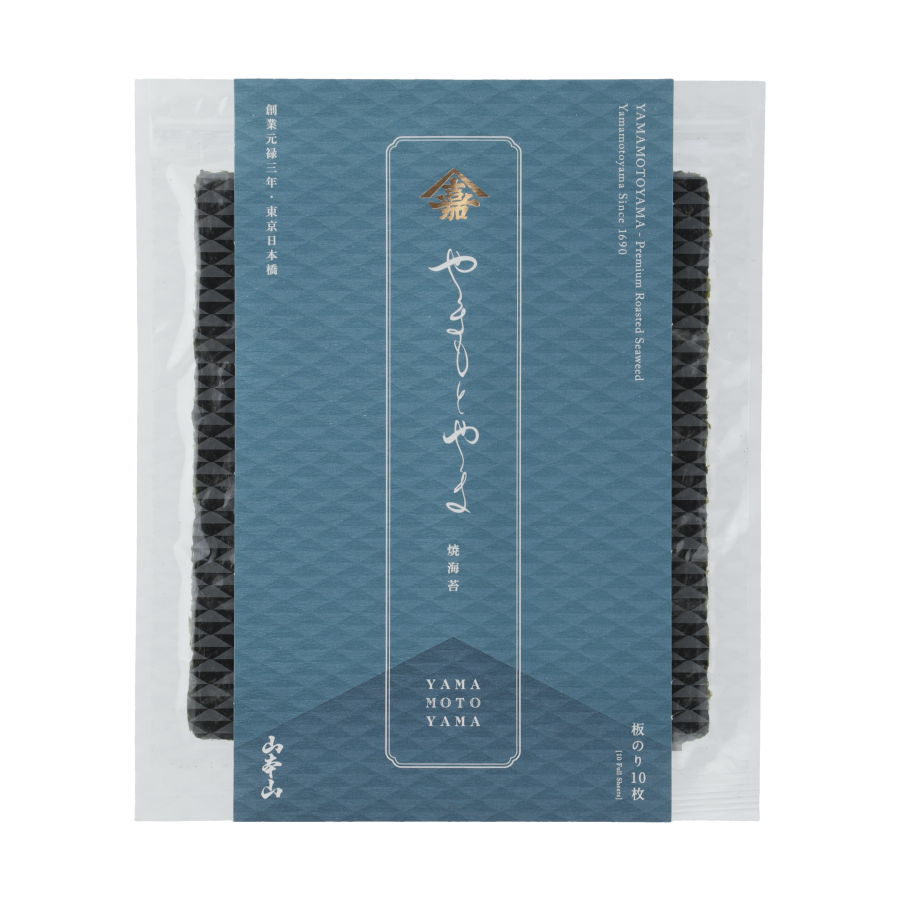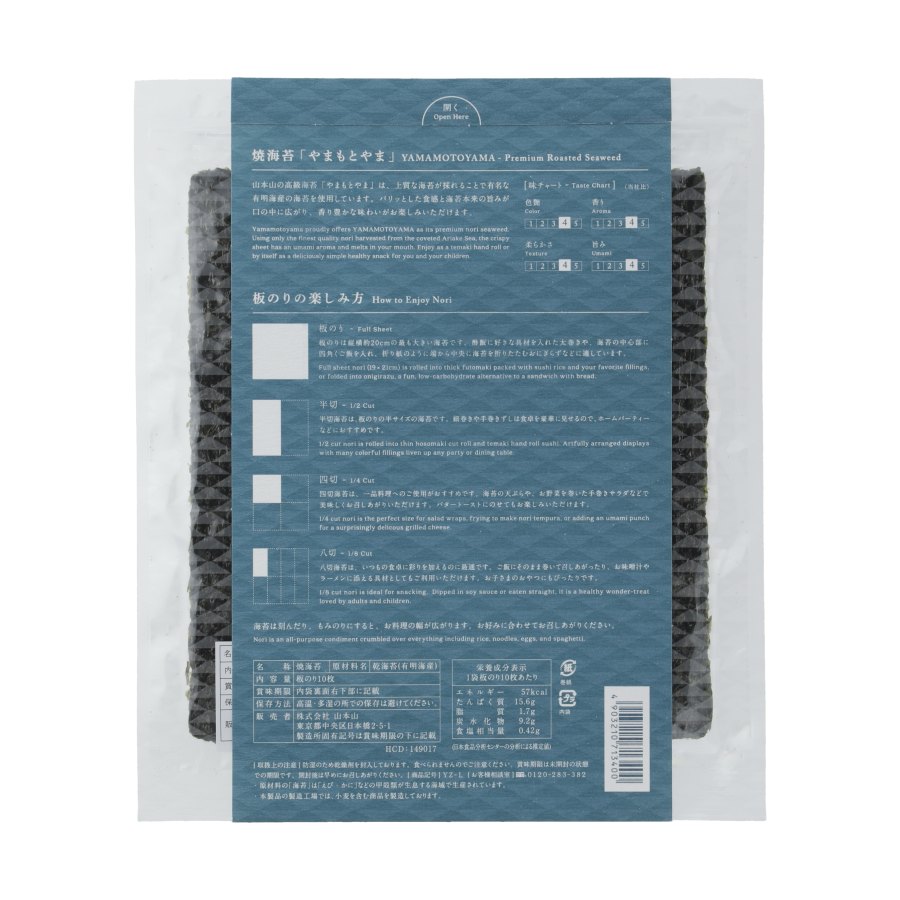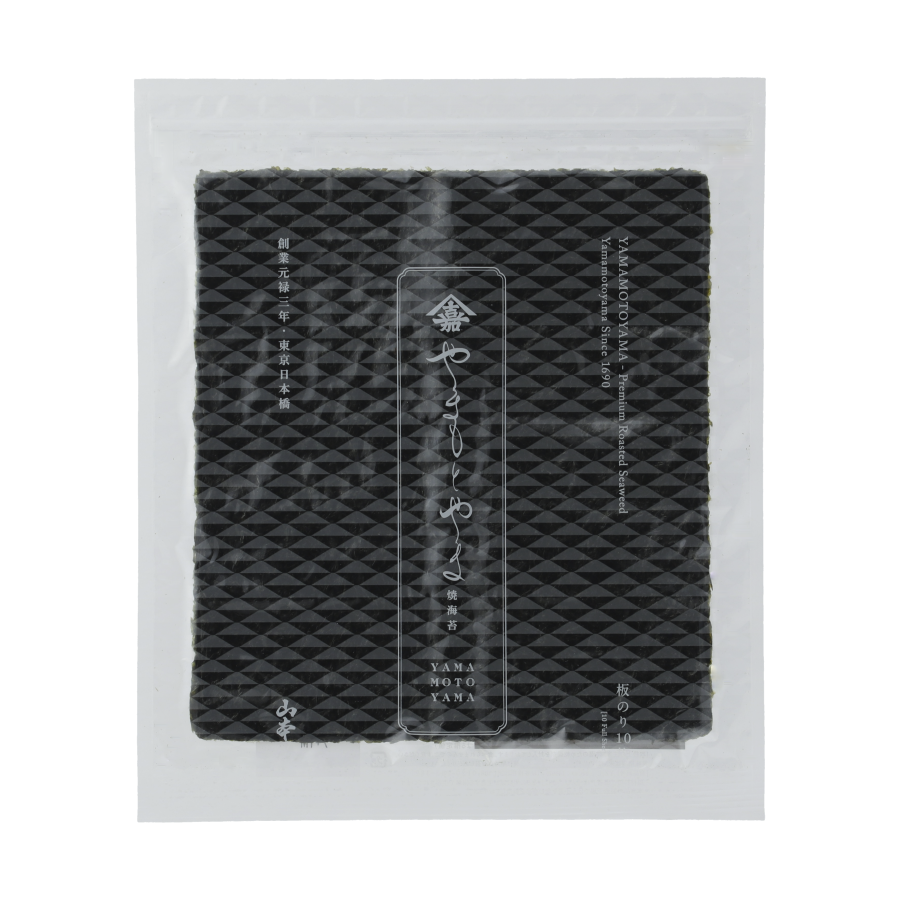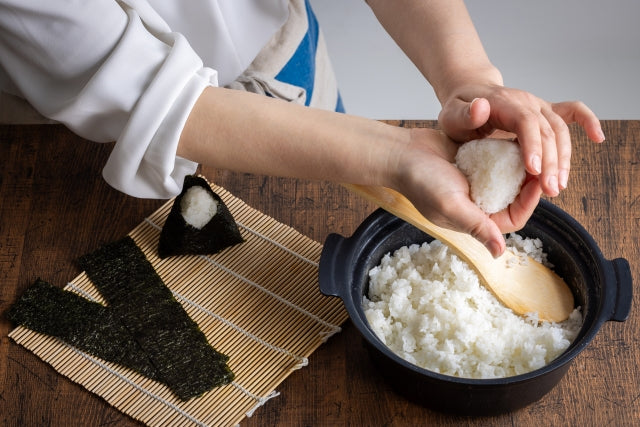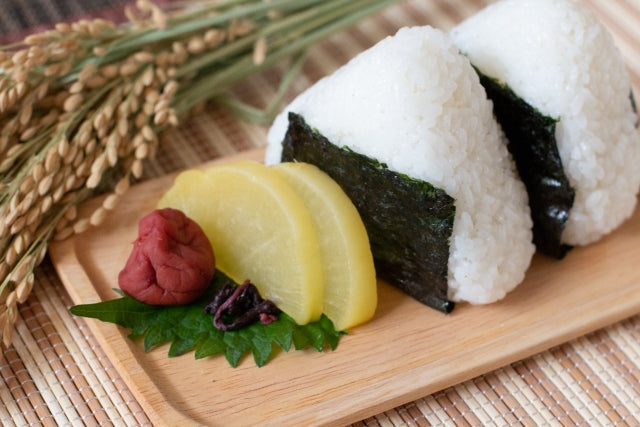
Basic + Variations! 6 ways to wrap seaweed around onigiri | Secret tips for choosing seaweed to make delicious onigiri!
Introduction
Nori seaweed can be said to be the face of onigiri.
But it's not enough to just roll it! In fact, did you know that the way you roll it can completely change the appearance and taste?
There is no set way to wrap it or a set name for it, but today we will introduce six typical styles.
You'll be amazed at how much the impression changes depending on the amount of seaweed used and how it's wrapped! Please come and experience the profound world of onigiri.

6 ways to wrap seaweed around onigiri rice balls
Below are the six basic ways to wrap onigiri seaweed.
Try wrapping the nori in different ways to experience the different tastes and textures.
The flavor of nori varies depending on the type, such as roasted or seasoned, so try different types and find your favorite combination.

1. Obi wrapping
The standard style of rice ball is "obimaki," in which a strip of nori seaweed is wrapped all the way around the shaped rice, like a ribbon on a gift.
This is a common way of wrapping rice balls that use bale-shaped rice balls or seasoned seaweed. By wrapping the long, thin pieces of seaweed around the rice ball like a sash, it gives off a somewhat elegant and cute impression.
The balance of seaweed and rice is just right, and it looks beautiful, so it's also recommended for bento lunches.

2. Side wrapping
"Side Roll" is a rather stylish rice ball in which the side of the rice ball is tightly wrapped in seaweed.
This is a perfect way to roll triangular or drum-shaped onigiri. This method is sometimes used for onigiri that have no filling inside and are instead placed on a large surface to show off.
For example, making rice balls with plenty of colorful salmon roe or fragrant salmon flakes will create a gorgeous, appetizing dish.
By wrapping the nori around the sides, you can enjoy the flavor of the nori even more.

3. Center roll
Speaking of onigiri, this is it! It is a traditional style with a small piece of nori seaweed placed in the center of the onigiri.
It can be easily combined with any shape of onigiri, such as triangular or drum-shaped. It is simple, but you can really taste the flavor of the seaweed. It is well-balanced with rice and is extremely easy to eat.

4. Fully wrapped
For seaweed lovers, the "Full Wrap" is a must-try. It is a luxurious way of wrapping in which the entire onigiri is wrapped in a large piece of seaweed.
One bite and the flavor of the seaweed fills your mouth. Many of the round rice balls and triangular rice balls you often see at convenience stores are wrapped completely in this way.
Since you can taste the seaweed no matter where you eat it, this is the perfect way to roll for those who want to fully enjoy seaweed.

5. Sandwich roll
This method of rolling involves wrapping the rice in a large piece of seaweed until it is no longer visible.
You can align both ends of the nori seaweed to create a neat impression, or you can leave one end longer to create a playful shape.
You can enjoy both a moist and soft texture in the part that touches the rice, and a crispy texture in the part that does not touch the rice.
This is recommended if you want to fully enjoy the taste of high-quality seaweed.

6. Kimono wrapping
As the name suggests, the seaweed is wrapped around the rice ball like a kimono, making it a visually beautiful method of wrapping.
The key is to leave the rice peeking out from the top, with colorful ingredients placed on top, like beautiful skin peeking out from the collar of a kimono.
Since you can see the ingredients at a glance, it's convenient and easy to choose even in a store with many different types of onigiri.
Recommended for when you want to take your usual onigiri to the next level.

The secret to choosing the best seaweed to make the most delicious onigiri
If you want to make delicious onigiri, choosing the right seaweed is important! We are seaweed professionals and will teach you the best way to choose it.
The key points are aroma, luster, and thickness. Seaweed that has a rich ocean aroma, a shiny black luster, and is neither too thick nor too thin is ideal for onigiri.

When choosing seaweed at the supermarket, be sure to check the color of the seaweed.
Delicious seaweed is always black in color. Seaweed that is deep black and shiny, with a lacquered appearance, is said to be flavorful and delicious.

On the other hand, lower quality seaweed is green in color.
This green color is evidence that the seaweed is not fully grown. You may see this green color when purchasing cheap seaweed at supermarkets, but green seaweed often has a weak flavor and a poor texture.
We do not recommend this if you want to enjoy the original taste of seaweed, such as in onigiri or hand-rolled sushi.

The seaweed comes from a variety of places, including the Ariake Sea, the Seto Inland Sea, and Miyagi Prefecture, and we recommend enjoying the unique characteristics of the seaweed grown in each region.
First, there is the Ariake Sea, which boasts the largest seaweed production in Japan.
Because it grows in nutrient-rich oceans with large tidal variations, it has a high amino acid content and a strong umami flavor.

The moment you put it in your mouth, the soft scent of the sea spreads and it has a soft texture that melts in your mouth.
It's so soft that if you wrap it around rice for too long it will absorb the moisture and dissolve.
This is definitely recommended for those who like moist seaweed and those who want to enjoy the rich flavor of seaweed.

On the other hand, seaweed grown in the Seto Inland Sea is grown in rapid currents, so it is thick and has a firm texture. It also has a strong flavor, and goes perfectly with sushi rolls and rice balls.
The more you chew it, the more you can enjoy its unique aroma and texture. It is recommended for those who want to enjoy the crispy texture of seaweed.

In addition, seaweed from Miyagi Prefecture, where there is a large difference in temperature, is thick and has a concentrated sweetness and flavor, while seaweed from Chiba Prefecture, which faces Tokyo Bay, is grown in a rich natural environment and is characterized by its flavorful, high-quality seaweed.
As you can see, seaweed has a wide variety of characteristics depending on where it is produced.
Please find your favorite place of origin and enjoy the perfect combination with your rice balls.

Is cheap seaweed good enough for onigiri?
"Nori seaweed for onigiri is cheap, so it's good enough, right?" You probably think so.
However, since nori seaweed is processed less, the price is directly linked to the quality of the material itself, and therefore the taste.
For this reason, cheap seaweed can often be of poor quality. It can be too thin and tear, or too thick and difficult to bite through, ruining your onigiri.
Because it is such a simple ingredient, why not choose high-quality seaweed? The moment you put it in your mouth, the scent of the sea spreads softly and blends perfectly with the sweetness of the rice.
It has a crisp texture and melts in your mouth. Even if it is a little more expensive, choosing high-quality seaweed will greatly improve the flavor of your onigiri.

When did onigiri start being wrapped in seaweed?
Onigiri is now an indispensable part of the Japanese dining table, but when did they start being wrapped in seaweed?
Nori seaweed itself has been familiar to the Japanese since ancient times.
The Hitachi no Kuni Fudoki, compiled in 721, already contains descriptions of people eating nori.
However, seaweed was a valuable commodity at the time and was rarely available to the common people. For a long time, it was only presented as a gift to the Imperial Court or served as a meal for the nobility.

Nori was originally made by harvesting natural seaweed and drying it to make "raw nori."
The scenes of seaweed drying on the beach depicted in the Fudoki are familiar to us even today. The manufacturing method has not changed much for over 1000 years.

The turning point came during the Edo period.
Seaweed cultivation began and production increased dramatically. Soon after, "sheet seaweed" was created, using the same manufacturing techniques as washi paper. This sheet seaweed is the type of seaweed we know today.
Thus, during the Genroku period (1688-1704), the style of wrapping rice balls in nori was born.

The reason for wrapping the seaweed around it is not clear.
There are various theories as to prevent rice grains from sticking to one's hands, or to take advantage of the rich nutrients in the seaweed.
Seaweed is rich in minerals and protein, and may have had the effect of supplementing nutrients that are often lost during the rice polishing process.

What's interesting is that "norimakizushi" appeared at roughly the same time that rice balls began to be wrapped in seaweed.
Onigiri and sushi, both representative of Japanese food culture, may have had a very close relationship.
During the Edo period, onigiri underwent various changes, and it could be said that it reached its perfection by combining white rice and nori seaweed. And we still enjoy its deliciousness today.

Recommended seaweed for onigiri
Below, we will introduce some of the seaweed products sold by Yamamotoyama that are especially recommended for onigiri.

